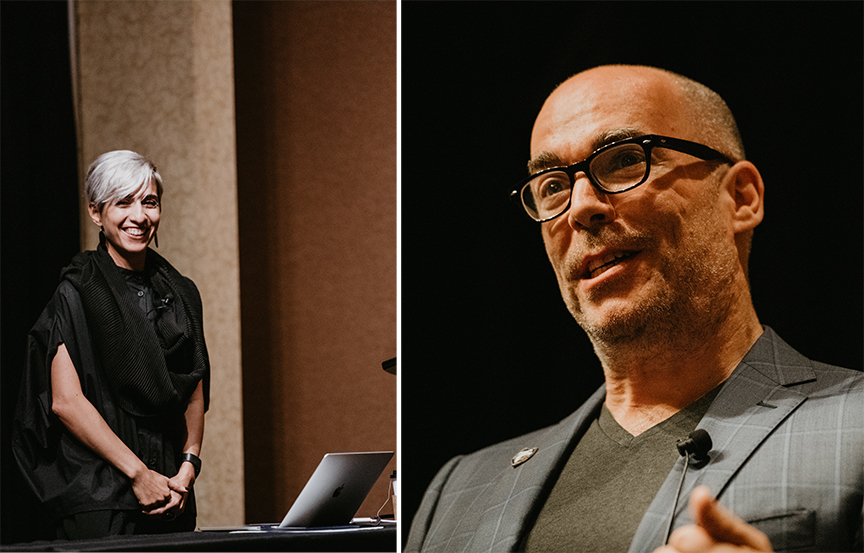
The University of Nebraska–Lincoln’s School of Art, Art History & Design hosted the 2018 Mid-America College Art Association Conference Oct. 4-5. The conference featured keynote lectures by cutting-edge artists Behnaz Farahi and Andy Cavatorta.
The conference theme was “Techne Expanding: Tensions, Terrains and Tools,” and it explored wide-ranging interpretations of technology and its use and impact on the teaching, making and performing of art, as well as the broader human experience.
Farahi's lecture was titled "Emotive Matter from Fashion to Architecture." Illustrated with a series of experiments, prototypes and interventions inspired by natural systems, her presentation addressed emotive material interfaces that respond to the behavior of the human body and its emotions through the implementation of emerging technologies.
Farahi is a designer and creative technologist based in Los Angeles and working at the intersection of fashion, architecture and interaction design. Trained as an architect and specializing in 3D printing and physical computing, her ultimate goal is to enhance the relationship between human beings and their environment by following morphological and behavioral principles inspired by natural systems.
Farahi is a recipient of a number of prestigious awards, including the 2016 World Technology Design Award and the 2016 Innovation By Design Fast Company Design Award. Her work has been featured on various television channels, including the BBC and CNN, and in leading journals and newspapers, such as Wired and The Guardian. She is currently an Annenberg Fellow and is completing her Ph.D. in Interdisciplinary Media Arts and Practice at the USC School of Cinematic Arts.
“I got really excited about the idea of interactivity,” Farahi said. “When I was just sitting in public spaces, I was seeing that people get really excited when something was interactive. There was a different level of engagement. So for me, I knew that I was interested in developing new interactive experiences in order to engage with users—that could be interactive architecture, it could be interactive garments, interactive objects. It doesn’t matter. For me, the basic line was the engagements. I wanted to increase that level of interactivity and create emotional connections.”
Farahi is also on the advisory council for the Johnny Carson Center for Emerging Media Arts.
“I’m very excited to see where this program is heading to,” she said. “It’s emerging out of nothing, which is very exciting. I think the goals that have been laid out for it provides fascinating opportunities.”
To see more of her work, visit her website at http://behnazfarahi.com/.
Cavatorta is an artist and researcher working with physical sound and robotics. His work explores technologically mediated emotions, opportunities to express the previously inexpressible, and how we make meaning with sound. This work is entirely new, but also part of a centuries-long tradition of exploring the artistic possibilities opened by every new technological or scientific development.
His talk was about the surprising history of music and technology, his own work, the pleasures and perils of working in unexplored spaces, and the importance of fake rules.
“When I first started this work, I thought that music and artistic expression were sort of at this inflection point where suddenly all this electronics and computer technology was coming in, and it would change it all in this huge direction, but that’s not really true,” he said. “We were just participating in a thing that has been going on non-stop for hundreds of years. When new things become possible, you see them show up in the arts. And it’s the ability to say things that are true that couldn’t be expressed before, that’s the thing that’s most exciting about this.”
Cavatorta is a graduate of the MIT Media Lab. He is the recipient of the Lincoln Prize. His recent collaborations include Björk and Matthew Herbert. His recent exhibits include MoMA (Museum of Modern Art), TED, The Royal Opera House and short documentaries by National Geographic, Vice and Stella Artois.
For more on his work, visit his website at http://andycavatorta.com/.